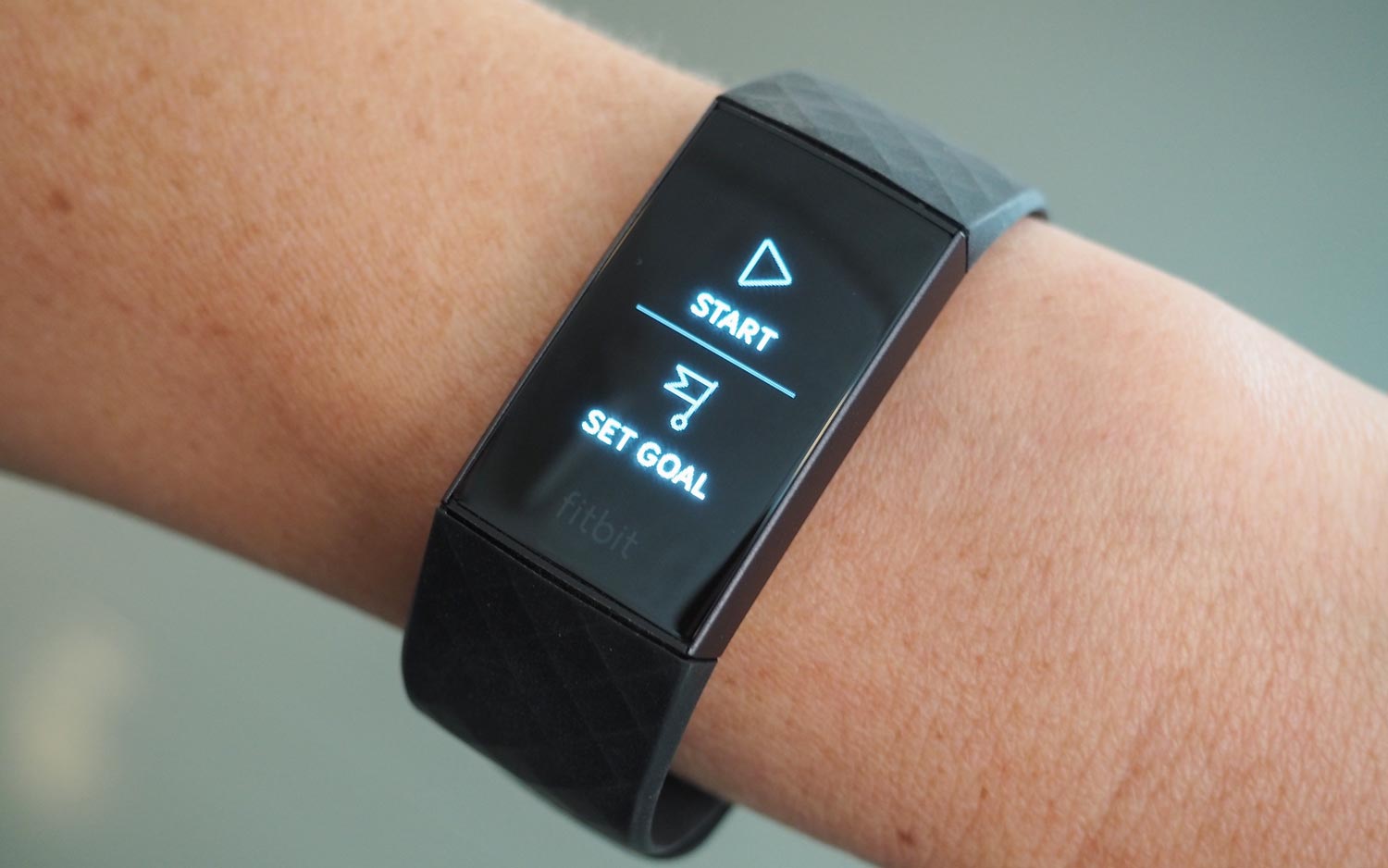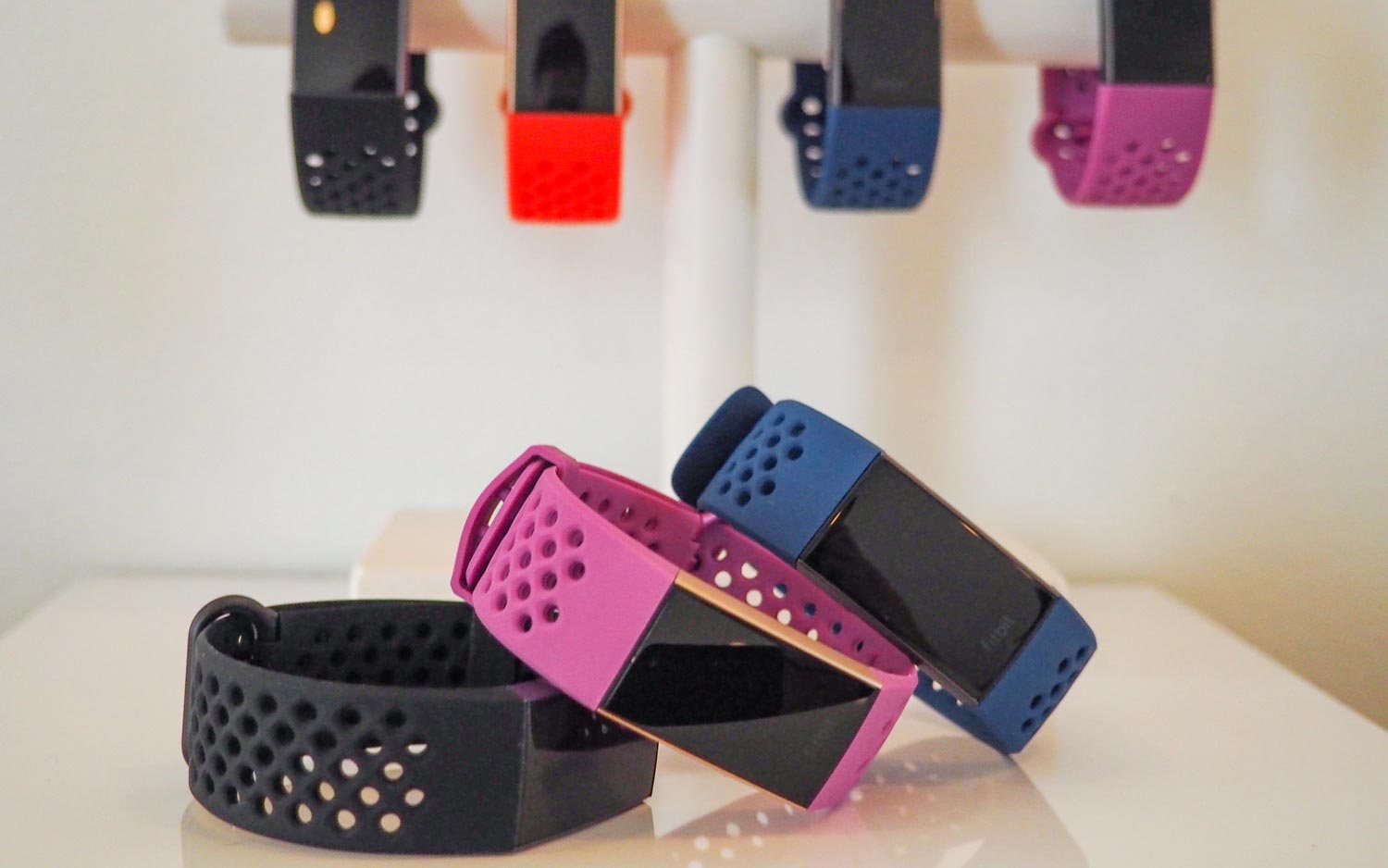Fitbit’s $150 Charge 3 Proves the Fitness Tracker Isn't Dead
The Fitbit Charge 3 is an evolved fitness tracker for those who don't want a smartwatch. Here's the Charge 3's price, its features and our first impressions.
Smartwatches are the future. But there's a certain type of person who doesn't want a smartwatch for a litany of reasons, including high price, bulky size, paltry battery life and limited functionality.
So Fitbit just announced the Charge 3, a classic fitness tracker designed with that person in mind.

We had a chance to go hands-on with this new $150 device; it’s available for preorder now. Stay tuned for our full review.
Fitbit Charge 3 Cheat Sheet: What's New
- Touch-screen display: A large, high-res OLED display lets you swipe and scroll instead of tapping, which is an upgrade from the Charge 2.
- Lengthy battery life: Fitbit says the Charge 3 can last up to seven days on a charge, up from the Charge 2's five-day battery life.
- It's swim-proof: Now you can use the Charge to track pool workouts, thanks to water-resistance and a new Swim Mode.
- No built-in GPS: The Charge 3 relies on your phone for a GPS signal, which isn't ideal for runners and cyclists.
Refined Look, Extra Features
At first glance, the Charge 3 looks almost identical to the Charge 2. But there are a few key differences. The biggest change is an expansive OLED touch-screen display. The Charge 2 responds to taps, but you can't swipe or scroll with your finger like you would on a phone. The Charge 3 now feels more like a smartwatch, albeit in the shape of a fitness band.

The screen is also taller, with 40 percent more active display area than the Charge 2, so you can see more workout stats, read smartphone notifications and and choose between multiple icons. Swiping around the Charge 3's display is much easier than forcefully jabbing at the Charge 2's screen.
Get instant access to breaking news, the hottest reviews, great deals and helpful tips.
Fitbit also ditched the physical side button for an inductive one, which works just like a regular button when you press it, but instead of a mechanical click you’ll feel a haptic vibration. The vibration strength can be customized. The button offers another way to navigate, quickly launching the workout screen, taking you back to a previous screen, and, in a workout, acting as the pause/end button.
A $169.95 special edition Charge 3 offers mobile payments with Fitbit's own system, Fitbit Pay, and on that device a long press of the side button calls up your credit card. (Fitbit is also including an extra band in the box with the pricier model to sweeten the deal).
MORE: Best Fitness Trackers and Watches
Alongside a refined new look, the Charge 3 has a bunch of tools to elevate your workouts. At long last, Fitbit's classic tracker is swim-proof. Activate swim mode before jumping in the pool, then sync the lap count, distance and pace to the Fitbit app afterward.

A new goal-based exercise feature allows you to set a calorie, time or distance target before each workout, right on your wrist. Like the Fitbit Ionic and Versa, the Charge 3 has an SpO2 sensor, which could one day tell you if you have sleep apnea. (More on this below.)
Fitbit crammed all of these new features into the Charge 3, and managed to extend the battery life, too. The new Charge can last up to seven days on a charge, up from the Charge 2's already-impressive five-day battery life.
Fitbit sacrificed onboard GPS to keep the Charge 3 slim and long-lasting, and the company has drawn early criticism for that decision. But Melanie Chase, Fitbit's vice president of product marketing, said the Charge user cares more about form factor, price and battery life than the advanced and accurate running and cycling stats you get from GPS. The Charge 3 relies on your phone's GPS, which is probably good enough for the casual exerciser.
Fitbit built out an app store for its newest devices, the Ionic and the Versa. The Charge 3 won’t have an app store in the traditional sense, but Fitbit is working with app makers to create a small, curated selection of apps that would make sense for the Charge 3 user and could be installed via the Fitbit smartphone app. The company declined to say what those apps might be or when to expect them, but if done well, they should make the Charge 3 even more useful.
Let's Get Personal
If you've used a Fitbit for any length of time, the company has a lot of data on you. Fitbit has racked up 9 trillion minutes of heart-rate data, 157 trillion steps, 7.5 billion nights of sleep and 417 billion minutes of exercise from its 25.4 million active users. Now it's going to use that information to deliver personalized health and wellness insights in the Fitbit app.
Fitbit will analyze your activity, heart rate, nutrition and sleep data to offer thoughts on how each facet of your health is related. For instance, you might find it easier to lose weight when you get more sleep. Data on monthly cycles and period symptoms will also be rounded up in those insights, for Fitbit users who are using the app's female health-tracking feature. The personalized insights feature is coming soon to the Fitbit app.
MORE: Fitbit Versa Review: The First Female-Friendly Smartwatch
Fitbit will soon roll out a beta program for even more detailed sleep insights than the app already delivers. The program will be open to all Fitbit users, but will offer advanced analysis for Versa, Ionic and Charge 3 owners. Those devices have an SpO2 sensor, which measures how much oxygen is in the blood. The sensor may one day be used to diagnose sleep apnea. But first, Fitbit has to collect and analyze sleep data. That's where the Sleep Score Beta program comes in.
Fitbit will calculate a sleep score based on how long you're asleep, how long you're awake, the type of sleep you get (light, deep, etc.) and whether your heart rate remains elevated while sleeping. For Ionic, Versa and Charge 3 users, the new feature will also measure whether your breathing is disturbed while sleeping and use that data from the SpO2 sensor to calculate a sleep score.
A potentially groundbreaking part of the beta program is an alert system that will notify you if your breathing is frequently disturbed while sleeping. That could be a sign of sleep apnea, which would require medical treatment. Fitbit can't yet connect the two dots, disturbed breathing and sleep apnea, because that would require approval from the Food and Drug Administration. But the company is participating in an FDA pilot program that would fast-track medical software to consumer devices in the coming years.
MORE: The Doctor on Your Wrist: How Smartwatches Are Saving Lives
Outlook
Fitbit has sold 35 million devices in the Charge lineup, which includes the original Charge, the Charge HR and the 2-year-old Charge 2. With the Charge 3, Fitbit is improving upon an already good device with design refinements and excellent fitness features.

Even the decision to leave a GPS antenna out is understandable, but that leaves a Fitbit fan who wants that feature with just one option, the Fitbit Ionic. That device, quite frankly, leaves a lot to be desired in the looks department. Other, cheaper fitness bands, such as Huawei's Band 2 Pro, combine GPS and a heart-rate sensor in a slim, long-lasting package, so it's obviously possible.
In a few years, smartwatches will be sleek enough and cheap enough that fitness trackers may fall by the wayside. But before that transition happens, Fitbit is filling in the gap with the Charge 3, which appears to be a solid band worth buying. Stay tuned for our full review.
Caitlin is a Senior editor for Gizmodo. She has also worked on Tom's Guide, Macworld, PCWorld and the Las Vegas Review-Journal. When she's not testing out the latest devices, you can find her running around the streets of Los Angeles, putting in morning miles or searching for the best tacos.
